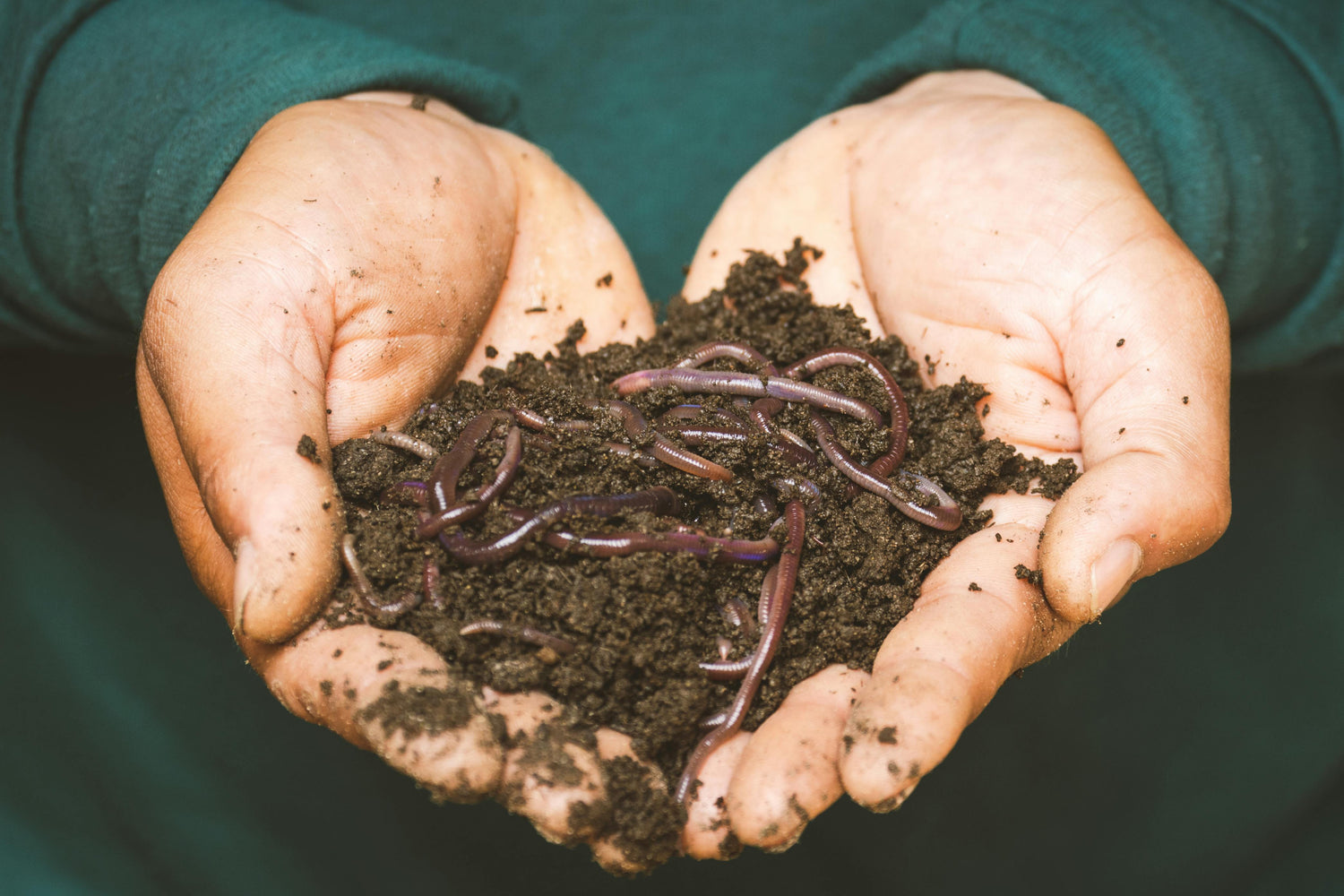If you’ve ever opened your worm bin and thought, “Something isn’t right,” you’re not alone.
I’m Samantha — most people call me Meme — and I raise composting worms every day in real worm bins and production systems. I’ve also killed more worms than most beginners will ever own. That’s how I learned this truth:
Most worm bin problems are not emergencies.
They’re balance issues — and balance can be fixed.
This guide walks you through the six most common worm bin problems, how to identify them quickly, and what to do without starting over.
Problem #1: Bad Smells in the Worm Bin
What it looks like
- Rotten or sour odor
- Wet, compacted material
Why it happens
- Too much food
- Poor airflow
- Excess moisture
How to fix it
- Stop feeding for 7–10 days
- Add dry bedding
- Gently fluff the top layer
👉 Full odor guide: Banishing Bad Smells: Your Guide to Worm Composting Bin Odors
Problem #2: Fruit Flies and Flying Bugs
What it looks like
- Small flies hovering above the bin
Why it happens
- Exposed or fermenting food
How to fix it
- Freeze food scraps before feeding
- Bury food 2–3 inches deep
- Cover food with dry bedding
Flies are annoying — not deadly.
Problem #3: Ants in the Worm Bin
What it looks like
- Ant trails entering the bin
Why it happens
- Bin too dry
- Easy access points
How to fix it
- Increase moisture slightly
- Elevate the bin
- Create a barrier around bin legs
Ants can harm cocoons if ignored.
Must Read : How to Keep Your Worm Bin Healthy While You’re Away
Problem #4: Mites Taking Over
What it looks like
- Tiny white, brown, or red specks
Why it happens
- Overfeeding
- Excess moisture
How to fix it
- Pause feeding
- Remove excess food
- Add dry bedding
Small numbers are normal. Overpopulation means imbalance.
Problem #5: Worms Crawling Up the Sides or Lid
What it looks like
- Worms trying to escape
Why it happens
- Environmental stress (not pests)
How to fix it
- Check moisture (wrung-out sponge)
- Check temperature
- Stop feeding temporarily
Worms crawl when conditions are off — not because they want to leave.
Problem #6: Slow Composting or Food Not Disappearing
What it looks like
- Food sitting untouched
Why it happens
- Too much food at once
- Low worm population
- Cold temperatures
How to fix it
- Feed smaller amounts
- Bury food properly
- Add bedding
- Be patient
Worms work slower than people expect — and that’s normal.
Comparison: Meme’s Worms vs Other Guides
Approach to Worm Bin Problems
|
Feature |
Meme’s Worms |
Typical Competitor Guides |
|
Start-over advice |
❌ Almost never |
⚠️ Sometimes |
|
Root-cause focus |
✅ Strong |
⚠️ Mixed |
|
Bedding emphasis |
✅ Primary fix |
⚠️ Secondary |
|
Beginner confidence |
✅ High |
⚠️ Overwhelming |
|
Real-bin experience |
✅ Daily systems |
⚠️ General advice |
Worm Bin Problem & Pest ID Chart
Worm Bin Problem Quick Fix Chart
Bad Smell
Cause: Too wet / too much food
Fix: Add bedding, stop feeding
Fruit Flies
Cause: Exposed food
Fix: Freeze scraps, bury food
Ants
Cause: Bin too dry
Fix: Increase moisture
Mites
Cause: Overfeeding
Fix: Pause feeding, add bedding
Worms Escaping
Cause: Stress
Fix: Adjust moisture, temperature
Slow Composting
Cause: Overfeeding or cold
Fix: Feed less, be patient
Long-Term Prevention Rules (This Solves Most Problems)
✔ Always bury food
✔ Use the 2:1 rule (2 bedding : 1 food)
✔ Keep moisture like a wrung-out sponge
✔ Feed less, not more
✔ Leave the bin alone
Must Read : Worm Bedding: 9 Awesome Choices
Final Thoughts
Worm bins don’t fail overnight.
They drift out of balance — and drift back just as easily when you slow down, add bedding, and let the system work.
I’ve made every mistake in this guide so you don’t have to.




1 comment
Christine Comerford
Hello, I’ve had 3 worm bins in raised beds in our backyard, for about 2 years. They mostly do great, but we periodically have ant problems. Diatomaceous earth around the beds works sometimes, but not consistently. Any advice? During the crazy hot months, I put several ice cubes on top of their cardboard/blankets, to help keep them cool and hydrated. Thanks!
Leave a comment
All comments are moderated before being published.
This site is protected by hCaptcha and the hCaptcha Privacy Policy and Terms of Service apply.